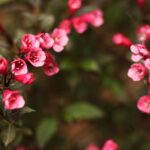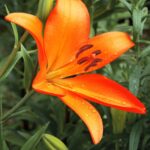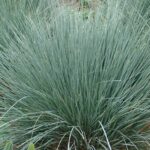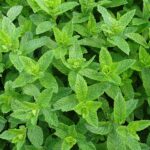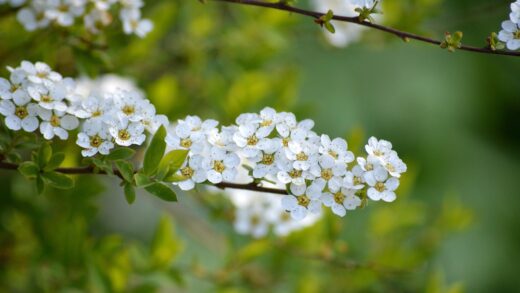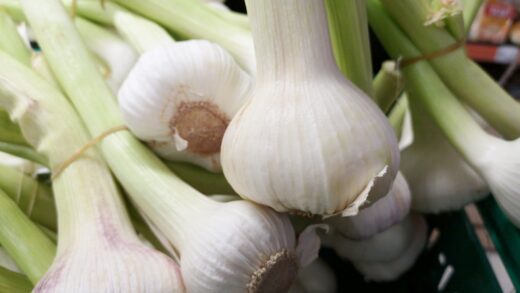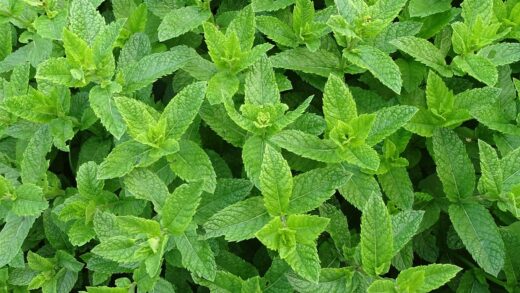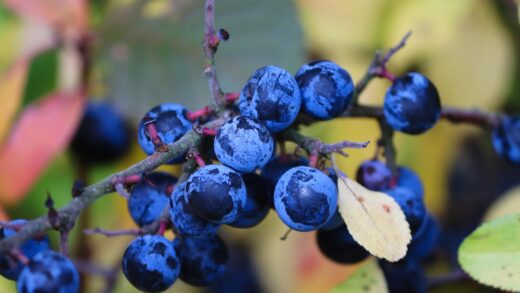Providing Hypericum androsaemum with the appropriate nutrition is a key element of its comprehensive care, directly influencing its vigor, the richness of its foliage, and the abundance of its flowers and berries. While it is not an excessively heavy feeder, a well-considered fertilization strategy can elevate its performance from merely adequate to truly spectacular. Understanding its specific nutrient requirements and the best methods for delivering them ensures the plant has the building blocks it needs to thrive throughout the seasons. A balanced approach to feeding, avoiding the extremes of both starvation and over-fertilization, is crucial for fostering a resilient, healthy, and aesthetically pleasing shrub in the garden landscape.
The primary nutrients required by all plants, including this one, are nitrogen (N), phosphorus (P), and potassium (K). Nitrogen is vital for promoting lush, green leafy growth. Phosphorus plays a crucial role in the development of a strong root system and is essential for the processes of flowering and fruiting. Potassium contributes to the overall health and vigor of the plant, helping with water regulation and enhancing its resistance to diseases and environmental stress. A deficiency in any of these macronutrients can lead to visible symptoms and a general decline in the plant’s performance.
Beyond the big three, a range of micronutrients, or trace elements, are also essential for the plant’s health, albeit in much smaller quantities. These include elements such as iron, magnesium, and manganese. A balanced fertilizer will typically contain these micronutrients, and they are also naturally present in healthy soils rich in organic matter. Deficiencies in these elements can cause specific issues, such as interveinal chlorosis (yellowing between the leaf veins), which is often a sign of an iron or magnesium shortage.
The best way to meet the nutrient needs of Hypericum androsaemum is to cultivate a healthy, living soil. Soil that is rich in organic matter, such as compost and well-rotted manure, provides a slow and steady release of a wide spectrum of nutrients as it is broken down by microbial life. This creates a resilient and fertile environment that can sustain the plant with minimal need for supplemental chemical fertilizers. Starting with good soil preparation before planting is the most effective long-term fertilization strategy.
Essential nutrients for healthy growth
Nitrogen is arguably the most visible of the essential nutrients in its effect, as it is a primary component of chlorophyll, the molecule that gives leaves their green color and drives photosynthesis. An adequate supply of nitrogen ensures the development of deep green, healthy foliage and vigorous stem growth. However, an excess of nitrogen can be detrimental, leading to rapid, soft, sappy growth that is more susceptible to pests like aphids and diseases. It can also promote leaf production at the expense of flowers, which is undesirable for a plant grown for its ornamental blooms and berries.
More articles on this topic
Phosphorus is the energy currency of the plant and is absolutely vital for a number of critical functions. Its most important roles are in root development, flower initiation, and seed and fruit production. For Hypericum androsaemum, a sufficient supply of phosphorus is directly linked to the quantity and quality of its signature yellow flowers and the subsequent berries. A deficiency can result in stunted growth, a poor floral display, and a general lack of vitality. Ensuring phosphorus availability is key to maximizing the plant’s multi-seasonal appeal.
Potassium acts as a regulator for many of the plant’s internal processes. It helps to control the movement of water, nutrients, and carbohydrates within the plant tissues. It is also critical for activating enzymes that are involved in protein synthesis and other metabolic functions. A plant with adequate potassium is stronger, more resilient to drought and temperature extremes, and better able to fend off diseases. For this shrub, potassium contributes to the overall hardiness and longevity of the plant in the garden.
The importance of soil pH in nutrient availability cannot be overstated. Even if essential nutrients are present in the soil, they may be chemically “locked up” and unavailable to the plant if the pH is too high (alkaline) or too low (acidic). Hypericum androsaemum prefers a slightly acidic to neutral pH range. In highly alkaline soils, for instance, iron can become insoluble, leading to iron chlorosis. Therefore, managing the soil pH is a fundamental aspect of ensuring the plant can actually absorb the nutrients that are present in its environment.
Choosing the right type of fertilizer
When selecting a fertilizer, gardeners are faced with a choice between organic and synthetic options, each with its own set of advantages. Organic fertilizers, such as bone meal, fish emulsion, or composted manure, are derived from natural sources. They release their nutrients slowly as they are broken down by microorganisms in the soil. This slow-release nature reduces the risk of burning the plant’s roots and also helps to improve the soil’s structure and overall health over time. They provide a more holistic approach to plant nutrition.
More articles on this topic
Synthetic or chemical fertilizers are manufactured products that offer a more concentrated and readily available source of nutrients. They can provide a quick boost to a plant that is showing signs of a specific deficiency. They are often formulated with a precise N-P-K ratio, which is displayed on the packaging, allowing for a targeted application. For example, a balanced fertilizer like a 10-10-10 formulation provides equal parts of the three main macronutrients. While effective, they do little to improve soil health and can, if overused, contribute to the buildup of salts in the soil.
For the general health and maintenance of Hypericum androsaemum, a balanced, slow-release granular fertilizer is often the best choice, whether organic or synthetic. This type of fertilizer is typically applied once in the early spring as new growth begins. The granules gradually break down over several months, providing a steady and sustained supply of nutrients throughout the main growing season. This “one and done” approach is convenient and aligns well with the modest feeding requirements of the shrub, preventing the boom-and-bust cycle of rapid growth that can be caused by liquid feeds.
In addition to general-purpose fertilizers, specific amendments can be used to address particular needs. For example, if a soil test reveals a phosphorus deficiency, bone meal can be worked into the soil around the plant. If the foliage appears yellowed in a way that suggests iron chlorosis, a chelated iron product can be applied as a foliar spray or a soil drench for a quick correction. However, these targeted treatments should be used judiciously and ideally in response to a clear, identified need rather than as a routine application.
Developing a fertilization calendar
The timing of fertilizer application is as crucial as the choice of fertilizer itself. The most important time to feed Hypericum androsaemum is in the early spring, just as the plant is emerging from dormancy and beginning to produce new shoots. This application provides the necessary fuel for the initial flush of growth, supporting the development of healthy leaves and setting the stage for a strong flowering season. A single application of a balanced, slow-release granular fertilizer at this time is often sufficient for the entire year.
A second, lighter application of fertilizer is sometimes beneficial, particularly for plants grown in containers or in very poor, sandy soils where nutrients leach away quickly. If a mid-season boost is deemed necessary, it can be applied in early summer, just as the plant begins its main flowering period. A liquid feed, such as a seaweed-based fertilizer, diluted to half-strength can be a good option for this. It provides a gentle and readily available source of nutrients and trace elements to support the plant through the energy-intensive process of flowering and berry production.
It is critically important to avoid fertilizing late in the growing season. Applying fertilizer, especially one that is high in nitrogen, in late summer or autumn can stimulate a new flush of soft, tender growth. This new growth will not have sufficient time to harden off before the first frosts arrive and is therefore highly susceptible to being damaged or killed by the cold. This not only wastes the plant’s energy but can also create entry points for diseases. All feeding should cease by late summer to allow the plant to prepare naturally for winter dormancy.
For newly planted shrubs, the fertilization strategy should be slightly different. It is generally recommended to avoid adding a concentrated fertilizer directly into the planting hole, as this can burn the new, sensitive roots. Instead, it is better to amend the backfill soil with a good amount of organic compost. The first application of a granular fertilizer should wait until the plant has had a few weeks to settle in and has started to show signs of new growth, indicating that its root system is beginning to function effectively in its new environment.
Recognizing and correcting nutrient deficiencies
Learning to read the leaves of a plant is a key skill in diagnosing nutritional problems. One of the most common deficiency symptoms is chlorosis, or the yellowing of leaves. The pattern of yellowing can provide clues to the specific nutrient that is lacking. For example, a general yellowing of the entire plant, often starting with the older, lower leaves, is a classic sign of nitrogen deficiency. This is because nitrogen is a mobile nutrient, and the plant will move it from older tissues to support new growth.
A deficiency in phosphorus can be more subtle. It often manifests as stunted growth and may sometimes cause the foliage to take on a purplish or reddish tinge, particularly on younger leaves. Flowering and fruiting will be noticeably reduced. Since phosphorus is crucial for root development, a plant suffering from a lack of this nutrient will have a weak and underdeveloped root system, making it more susceptible to other stresses like drought.
Iron deficiency presents with a very distinctive pattern of chlorosis. It typically affects the youngest, newest leaves first, and the yellowing occurs between the veins, while the veins themselves remain green. This is known as interveinal chlorosis. This condition is often caused not by a lack of iron in the soil, but by a high soil pH that makes the iron unavailable to the plant. Correcting the pH or applying a chelated iron supplement, which is readily absorbable by the plant, can resolve the issue.
When a deficiency is identified, a targeted approach to correction is usually best. For a general nitrogen deficiency, a quick-acting liquid feed or a top-dressing of a nitrogen-rich organic material like blood meal can be applied. For phosphorus issues, working bone meal or a superphosphate fertilizer into the soil is effective. However, the best long-term strategy is always prevention. Maintaining a healthy soil rich in organic matter and ensuring the pH is within the optimal range will prevent most nutrient deficiencies from occurring in the first place, allowing the plant to thrive without the need for frequent corrective interventions.









